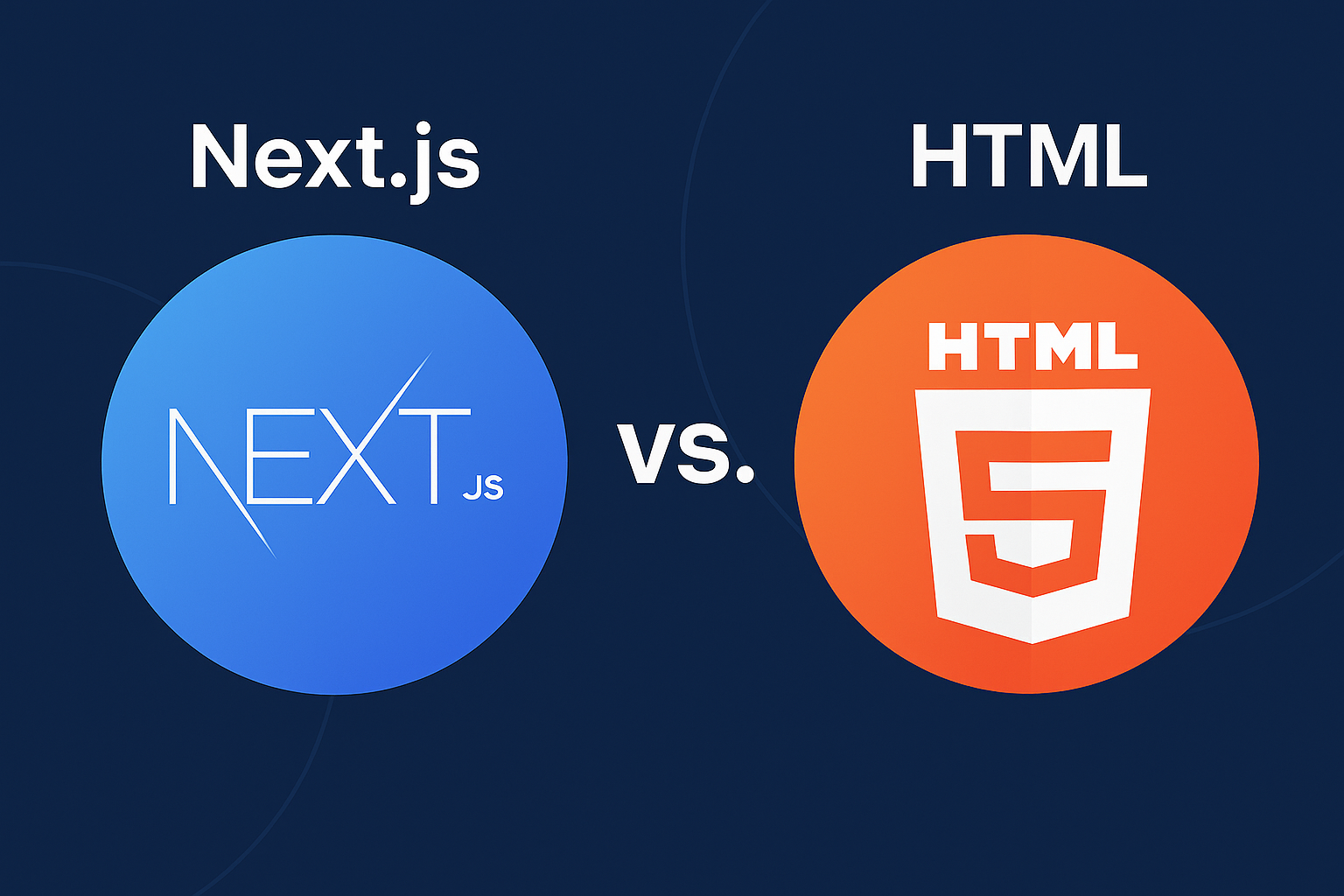Next.js vs. HTML Website for SEO: Which is Better ?

In the world of modern web development and digital marketing, SEO (Search Engine Optimization) remains the key to online visibility. Whether you’re building a portfolio, blog, business site, or SaaS platform, your framework choice can make or break your search rankings.
In this post, we’ll compare two distinct approaches: the traditional static HTML website vs the modern Next.js framework. Which one is better for SEO? Let’s dive in.
Understanding the Basics
What is a Static HTML Website?
A static HTML website is built with plain HTML, CSS, and optionally JavaScript. Every page is hand-coded, and there’s no server-side processing involved. These sites are fast and easy to host, but lack dynamic features.
What is Next.js?
Next.js is a modern React-based web framework that supports server-side rendering (SSR), static site generation (SSG), dynamic routing, and built-in image optimization. It’s designed to build scalable, high-performance web apps and websites.
SEO Comparison: Next.js vs HTML
1. Page Speed and Core Web Vitals
HTML: Naturally fast due to its lightweight nature. No additional JavaScript or server-side processing.
Next.js: Also highly optimized. Supports lazy loading, image optimization, and page-level code splitting.
Verdict: Tie – Both can deliver top performance if configured well.
2. Indexability and Crawlability
HTML: Search engines love static HTML — clean, readable, and easy to index.
Next.js: Fully SEO-friendly if using SSG or SSR. Client-side rendering can cause issues, but hybrid rendering resolves this.
Verdict: Slight edge to HTML, but Next.js catches up with proper setup.
3. Scalability and Dynamic Content
HTML: Hard to scale. Every change requires manual edits and deploys.
Next.js: Built for dynamic content. Works well with headless CMSs like Strapi, Sanity, or WordPress.
Verdict: Next.js wins for content-heavy or frequently updated websites.
4. Meta Tags and Structured Data
HTML: Requires manual entry of meta tags, canonical tags, schema markup, etc.
Next.js: Allows you to automate and dynamically generate SEO meta content using components like <Head> and libraries like next-seo.
Verdict: Next.js is more powerful and flexible.
5. Sitemap and Robots.txt
HTML: You must manually create and maintain sitemap.xml and robots.txt.
Next.js: Can automatically generate these using packages like next-sitemap, and even customize dynamic routes.
Verdict: Next.js makes automation easier.
| Feature | HTML | Next.js |
| Easy to build | ✅ | ❌ |
| Easy to maintain | ❌ | ✅ |
| Suitable for teams | ❌ | ✅ |
| Built-in routing & optimization | ❌ | ✅ |
Next.js is designed with modern dev workflows in mind — ideal for teams, clients, and growing websites.
Final Verdict
| Use Case | Recommendation |
| Simple landing page or static site | HTML |
| Blog, dynamic site, content-driven platform | Next.js |
| SEO scalability, CMS integration | Next.js |
If you're building a small site with no updates, HTML might still be enough. But if you're aiming for scalability, performance, and top-tier SEO — Next.js is the future-proof choice.